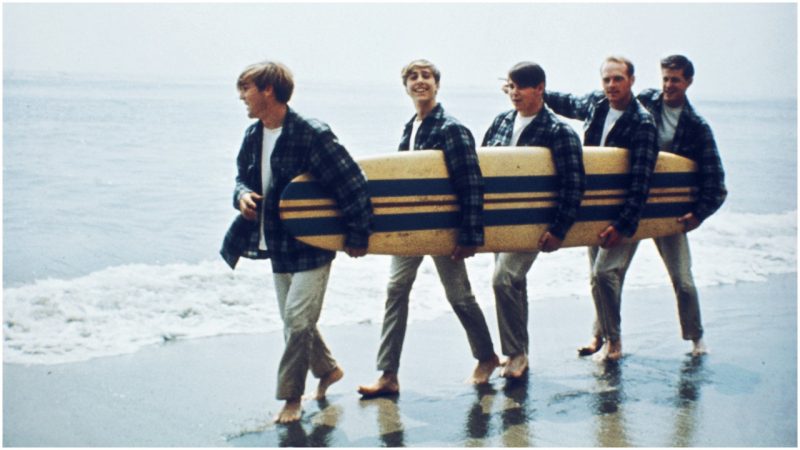You know this song: “Let’s go surfin’ now, Everybody’s learning how, Come on and safari with me!” In the early 1960s, the Beach Boys all but invented California rock, propagating an irresistible West Coast teen fantasy: You’d load your car (a classic Woody) with “boards inside” and drive to the beach to lie in the sand, surf, and swim with pretty girls. Life was good.
Their early era-defining hits were all about riding the waves—“Surfing is the only life, the only way of for me.” But the Beach Boys didn’t live the life they sang about. In fact, only one of the five original band members actually surfed, and lead singer Brian kept a healthy distance from the ocean because he was deathly afraid of the water.
This much is true: The Beach Boys were born and raised in Hawthorne, California, about five miles from the beach. They were not wealthy. The three Wilson brothers—Brian, Dennis, and Carl—shared a bedroom. Their father, Murry, had a day job as a foreman at a tire factory, but wrote songs and played piano at home in the garage he’d converted into a music room. (Murry also ruled the household with an iron will and fist; Brian would later recount in an autobiography the abuse he suffered at his father’s hands.) All of the family members sang, and as they listened to late 1950s radio, they dissected the harmonies together.
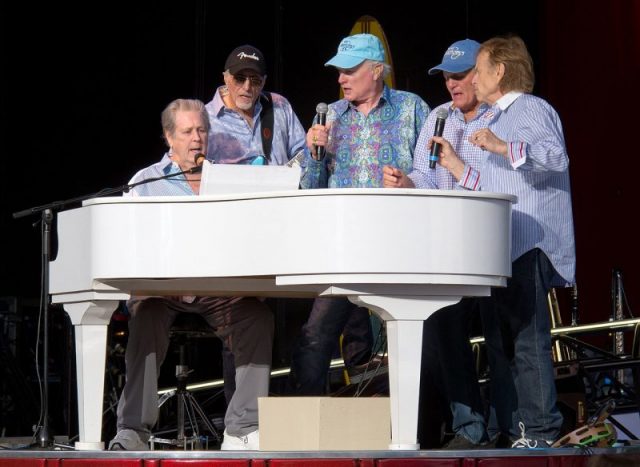
(left to right) Brian Wilson, David Marks, Mike Love, Bruce Johnston, Al Jardine. Author: Louise Palanker CC BY-SA 2.0
While still in high school, Brian and his cousin Mike Love, who would become a Beach Boy, performed as a band. Love gave this early band their first name, the Pendletones (a mashup of then-popular Pendleton shirts and “tones” for music). A high school class mate, Al Jardine, joined the Wilson brothers and Love. The five practiced together, rented studio equipment, and recorded two demo surfing songs that Murry, acting as a manager, took to a record company contact. A promoter changed the band’s name to better associate it with the material, and the Beach Boys were born.
With their pitch-perfect harmonies, happy lyrics, hypnotic rhythm, and glossy guitar riffs, the fresh-faced five exuded a sunny optimism that the radio-listening public eagerly embraced. “Surfin’” became a number one hit in Los Angeles when it was released in 1962. In their first four years, the Beach Boys landed 20 hits on the Top 40.
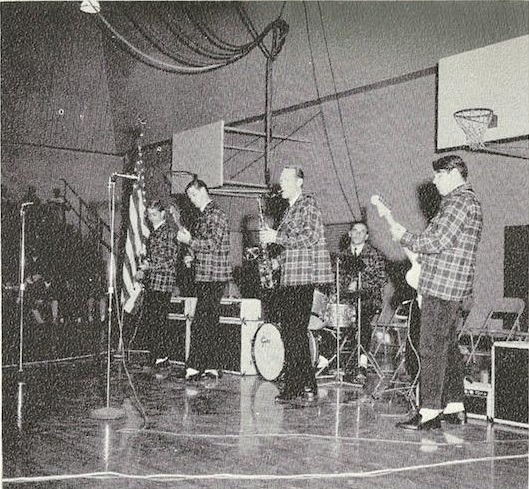
While their musicianship is undeniable, their act as surfin’ lovin’ dudes was at best a stretch.
Brian didn’t even swim. He was deaf in his right ear, possibly from a blow to the head he received as a child—from another child or from his father. As he grew into songwriting, he became protective of his remaining hearing. Doctors during that era often advised patients with hearing loss to avoid getting water in their ears, so he may have internalized that restriction as fear.
On stage, the Beach Boys wore their “surfer” uniform of tight white Levis, striped shirts, and blue sneakers. They dropped their California lingo as soon as they left the stage.
“The Beach Boys–the three Wilson brothers, a cousin, and a neighbor–are aware of the disparity between the Beach Boy image and what they actually are, but they don’t mind,” a reporter for the Harvard Crimson wrote in 1965.
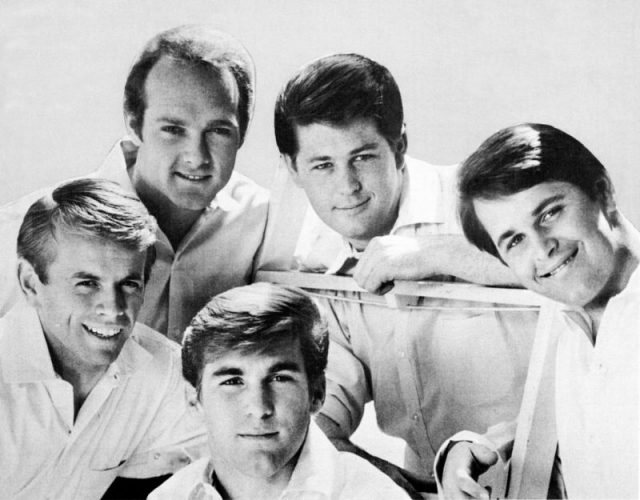
The Beach Boys’ sunny outlook also belied troubled waters: Brian, who was later diagnosed with schizophrenia and other mental disorders, suffered a nervous breakdown and quit performing in 1965. He continued to write and produce albums—including Pet Sounds, which some deem their most important work—but struggled with drug addiction and psychological problems that included hallucinations.
In 1966, while he was producing the album Smile, Brian had a sandbox installed in his dining room so he could, you know, be inspired by the beach without having to actually go to a beach. A grand piano was placed in the middle of the sandbox. This eccentricity was excused in a musical genius but was probably a sign of mental instability.
The Beach Boys continued to record and tour, selling an estimated 75 million records, but the lineup changed many times over the years, and the band’s creativity had long ago peaked. By the 1970s, the Beach Boys became known as an oldies-but-goodies act. In the 1990s Brian and Mike Love engaged in costly legal battles over the band’s name, song ownership, and royalties.
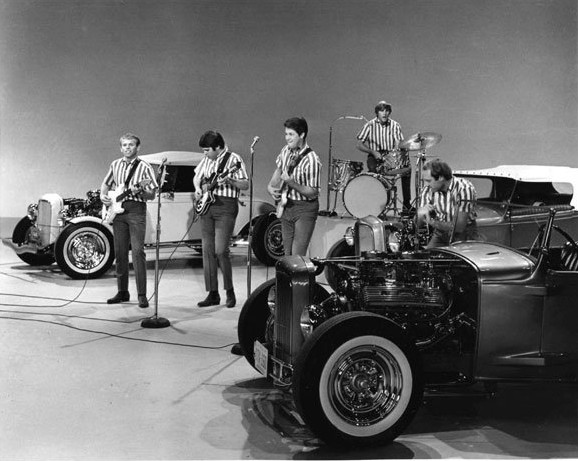
In a cruel irony, Dennis, the Beach Boys’ drummer and the only brother who actually knew how to surf, died by drowning in 1983. Like his brother Brian, Dennis had struggled with drugs, alcohol, a mercurial personality, and psychological problems. He’d spent a night and day on a yacht with a friend and two women, drinking and diving in 58-degree water, before he failed to re-emerge from the depths. The Marina del Ray Harbor patrol later found his body. Dennis was dead at 39 years old.
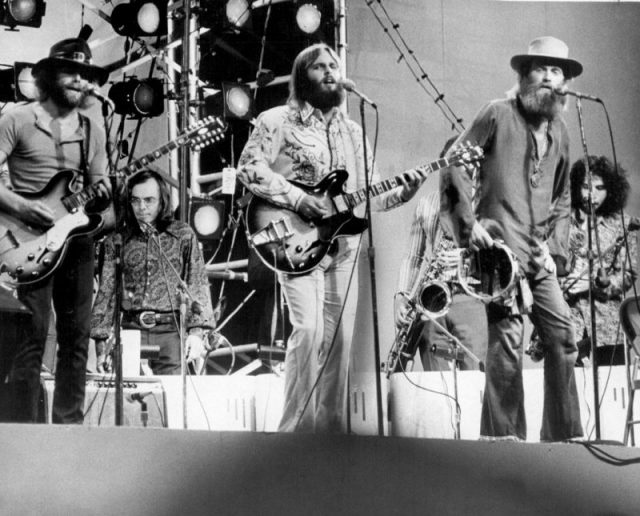
Carl Wilson, diagnosed with cancer in 1997, continued to tour until shortly before his death in early 1998, at age 51.
The Beach Boys were inducted into the Rock and Roll Hall of Fame in 1988. An iteration of the band still tours today, with Mike Love as the only remaining member of the original lineup. Brian Wilson also tours, celebrating the 50-plus-year anniversary of Pet Sounds.
